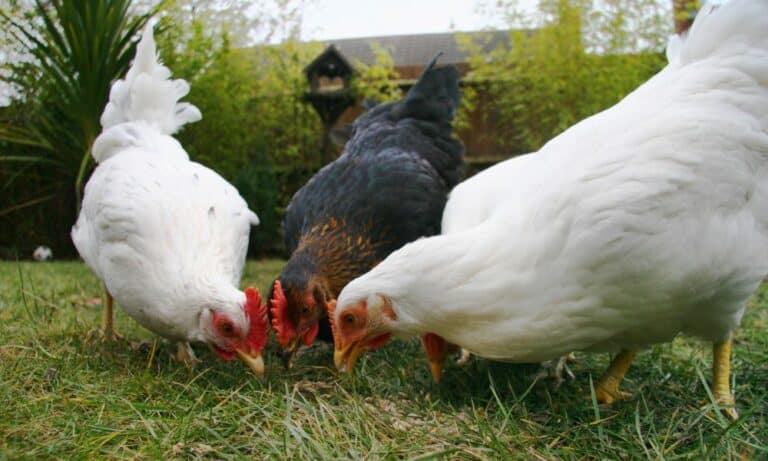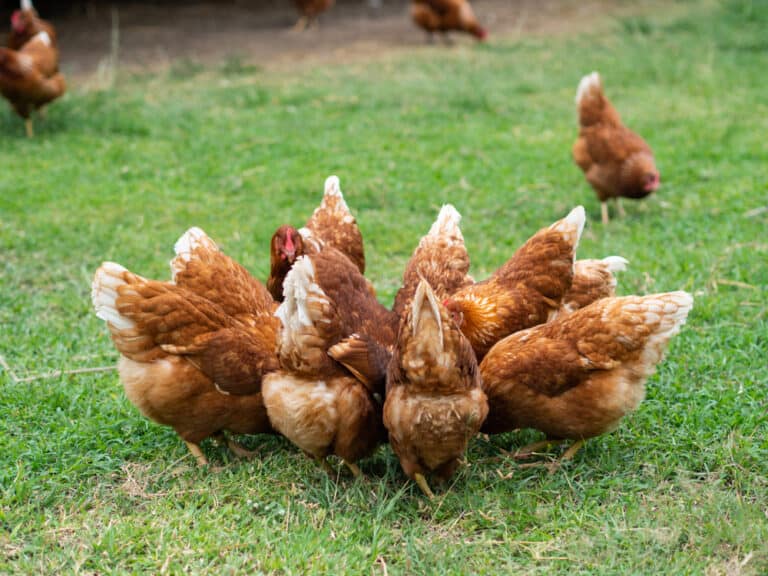Have you ever thought about why do chickens lay different colored eggs?
Whether you are a chicken keeper or just curious about the colors of the eggs, this question is very interesting, and people often tend to ask what affects the color of the eggs.
You have probably seen white, cream-colored, and brown eggs, although the color spectrum of chicken eggs is broader. There are also pinkish and blue/green eggs, which are not artificially colored, to everyone’s surprise.
Let’s dive into the mystery of different colored eggs and other interesting information!
How Is An Egg Formed?
Before we start discussing the factors that can affect the color of the eggshells, we must first see how the egg is formed.
As you probably guessed, the journey of an egg starts when the yolk, which contains the unfertilized ovum, is released into the hen’s oviduct or a tube-like organ placed between the hen’s ovary and the tail.
Unlike most female animals, which usually have two functioning ovaries, hens have only one functioning ovary, which is interesting considering that a female embryo has two ovaries, but only one develops fully.
So, in other words, the egg forms in the oviduct while the chicken yolk forms in the ovary. After reaching the oviduct, it goes through a five-stage process of egg development, during which the yolk is fully created.
The process of egg formation is very short; it lasts approximately between 24 and 26 hours. It takes around 20 hours for the eggshell to be complete.
What Affects the Color of the Chicken Egg?
The most important factor affecting the color of the chickens’ eggs is the breed or genetics. In other words, chickens lay differently colored eggs due to their different genetic constitution, which determines the color of the eggs.
The breed of the hen will tell you what kind of eggs it will lay. For example, Ancona and Polish lay white eggs. On the other hand, Orpingtons are known to lay brown eggs.
It is vital to note that all eggs start as white. However, their color changes due to pigments deposited on the shades of white while the egg travels through the hen’s oviduct.
Chicken breeds have certain pigments that permeate the eggshell during its formation process. Besides the genetics and the breed, a chicken’s age and stress levels affect the tone and depth of color.
Certain young hens will lay dark eggs depending on the breed, while a more mature hen of the same breed may lay a bit lighter eggs.
What Predicts the Color of Chicken Eggs?
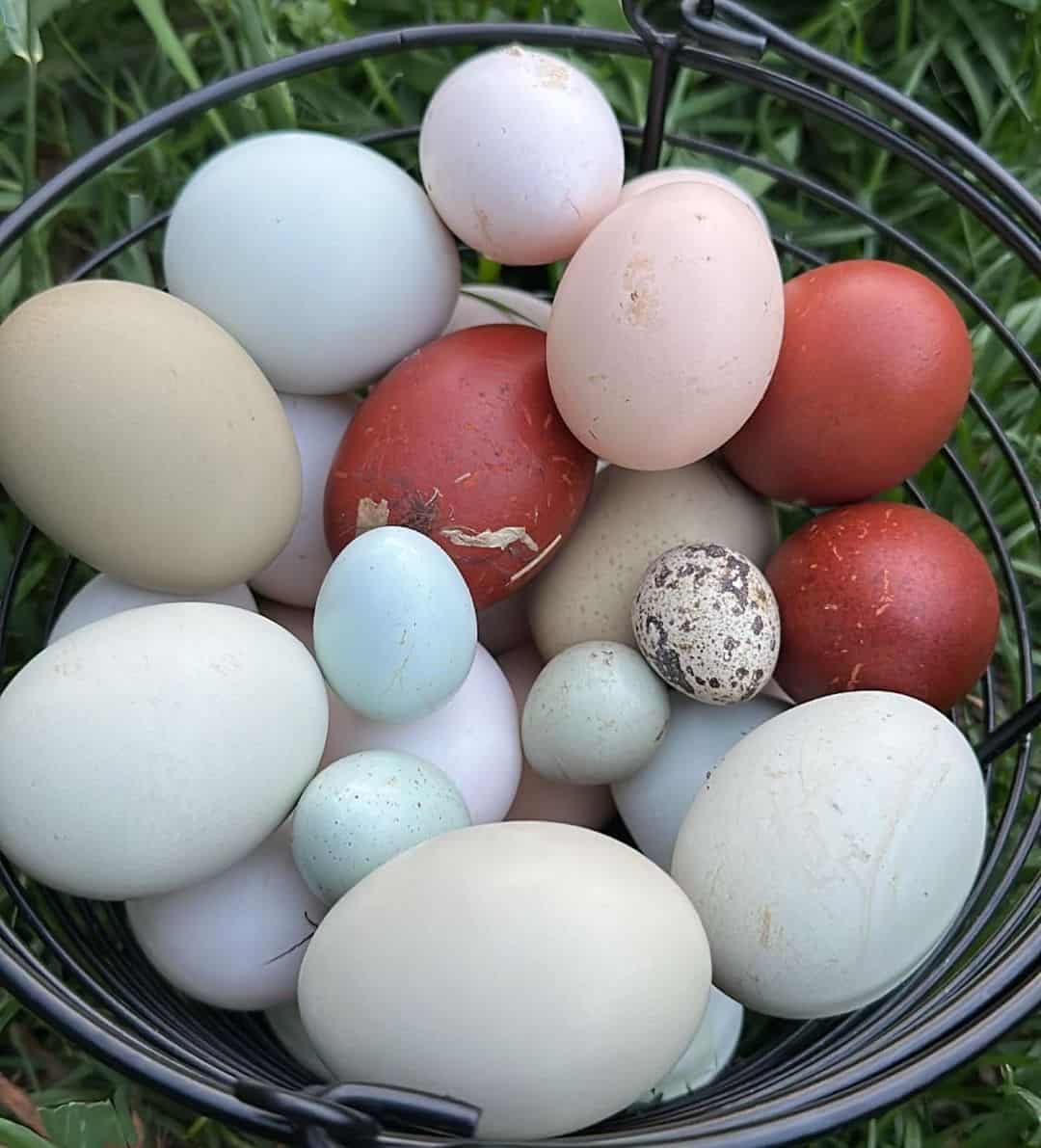
Did you know that the color of the chicken’s earlobes can help you determine the color of that chicken’s eggs? Yes, that is true! If you never kept chickens, you probably never thought to look at their earlobes; ultimately, aren’t all chickens’ earlobes the same?
No, they are not. If the hen has white earlobes or lightly colored ones, that hen will lay white eggs. On the other hand, if a chicken’s earlobes are brownish or on the darker side, that chicken will lay brown eggs.
Interestingly, the feathers, plumage, and feather pattern can also help you predict the color of the eggs.
The chickens with colorful feather patterns and darker earlobes will produce brownish eggs, while hens with white feathers and lighter earlobes will lay white eggs.
There are also other colors of eggs besides these two, such as olive-colored or green eggs. However, the chickens that lay these colored eggs do not have correspondingly colored earlobes.
Their eggs are green or even blue because these hens were genetically programmed and bred to produce these eggs. In most cases, the hen that lays these eggs is a hybrid, meaning two different breeds were crossbred to produce this breed.
What Eggshell Colors Exist In the Poultry World?

There are three color shades of chicken eggs, and those are white, brown/tan, and green/blue eggs.
1. White Eggs
White or eggshell-colored eggs are the most popular and common in the US. It is believed that Christopher Columbus, the Spanish explorer brought the Singe-Comb White Leghorn to the US in 1493, a year after discovering the continent.
Leghorn chickens, which have white feathers and white earlobes, lay white eggs. Their eggs are white because these chickens, such as Leghorn, do not have any pigment.
2. Brown Eggs
Brown eggs are the second most popular and most commonly seen in the US. Interestingly, in certain regions, such as New England, brown eggs are more preferred than white ones. So, why are these eggs brown and not white?
Chicken breeds, such as Orpington, have a brown pigment called protoporphyrin deposited on the eggshells in the egg formation process. Suppose you have cracked a brown egg in your lifetime. Have you noticed that the interior is white?
That is because the brown pigment does not permeate the interior, only the exterior. However, that is not the case with blue eggs, for example. Also, certain brown eggs can display a shade of orange, which happens due to intense color or pigment.
Interestingly, Orpington chickens have red earlobes, and they lay brown eggs.
3. Blue Eggs
Although many people think these eggs are colored or fake, that is not true. So, how come they are blue?
Some chicken breeds, such as Ameraucana, have a gene that applies a specific pigment called enocyanin to the bloom, and then it is deposited on the egg while it travels through the oviduct.
These pigments, a byproduct of bile production, color the eggshell, resulting in the blue-colored interior and exterior of the egg. As mentioned, this pigment colors both the outside and the inside, resulting in a blue eggshell.
4. Green Eggs
Besides the blue eggs, the green ones are equally captivating and interesting to those who have never seen them. As noted, the chickens that lay green eggs are hybrids (usually), and these mixed breeds have blue and brown pigments.
These pigments combined produce a green shell color. Interestingly, unlike brown eggs, in which the pigment is deposited late in the egg formation process, the pigment is added early in blue eggs. This explains why both the interior and exterior are blue.
Green eggs are very rare because there are not a lot of chicken breeds, such as Olive Egger, that produce these eggs.
Do Different Colored Eggs Taste Different?
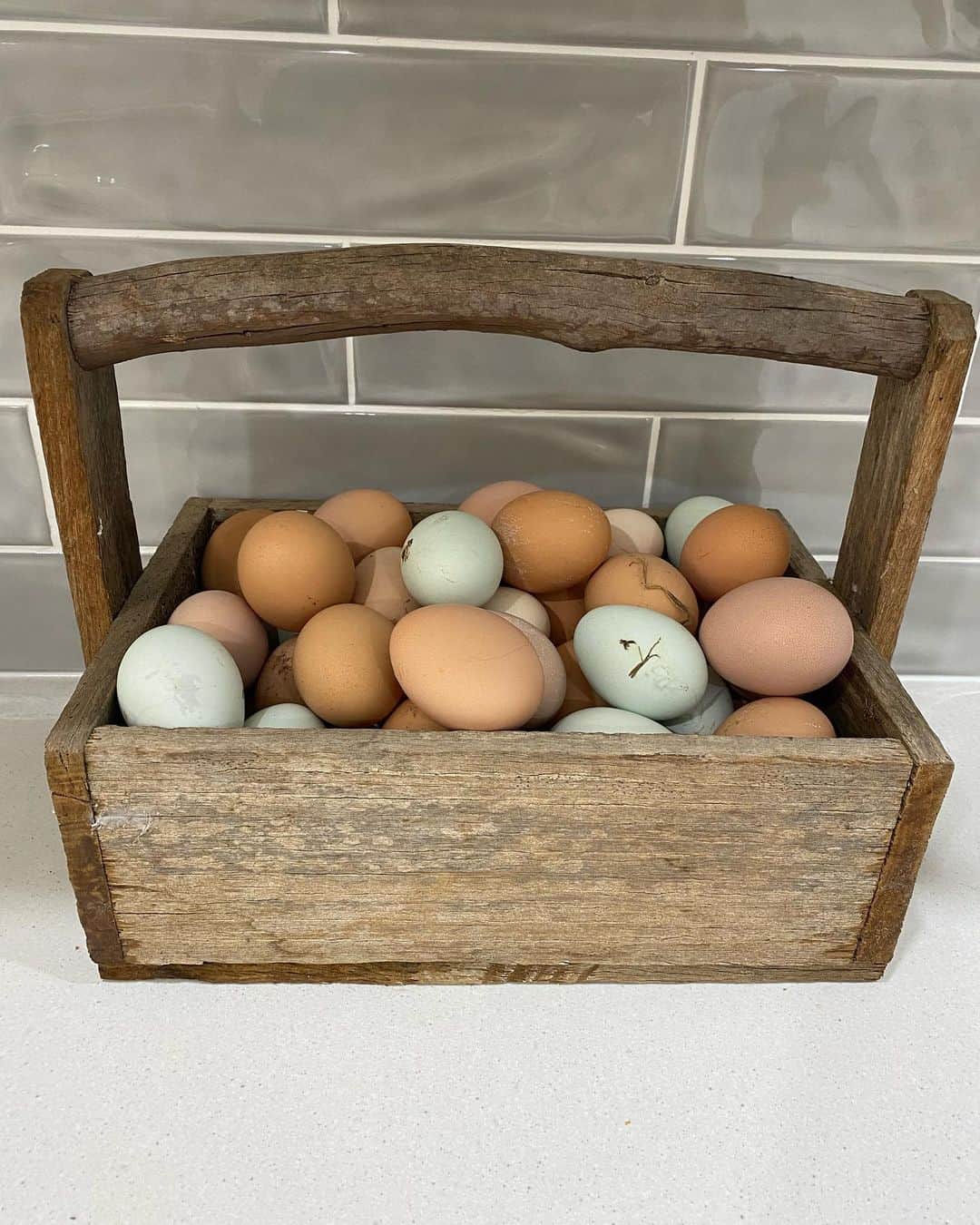
Regardless of the eggshell color, all eggs taste the same. The appearance and the taste of the whites and the egg yolk are also unrelated to the color of the eggshell. However, the taste and the appearance of the egg can be affected by the chicken’s diet.
A chicken keeper from Arizona conducted a test and gave his chickens red chilies, which interestingly changed the color of the chicken’s yolk to orange-red.
Red chilies are not the only food that can affect the taste and appearance of the chicken egg; corn can also cause the egg yolk to display a lighter yellow color.
Another interesting question that comes up when discussing different colored eggs is whether they have the same nutritional value. The answer is yes; the number of proteins, calories, and cholesterol is the same.
However, there is a situation where these values can change which depends on the egg size. A very large egg will have more calories than the smaller one.
Ultimately, there is no big difference in egg taste and appearance, and regardless of which egg color you choose, you will be provided with the necessary nutrients and calories.
What Egg Colors Come From Which Breeds?
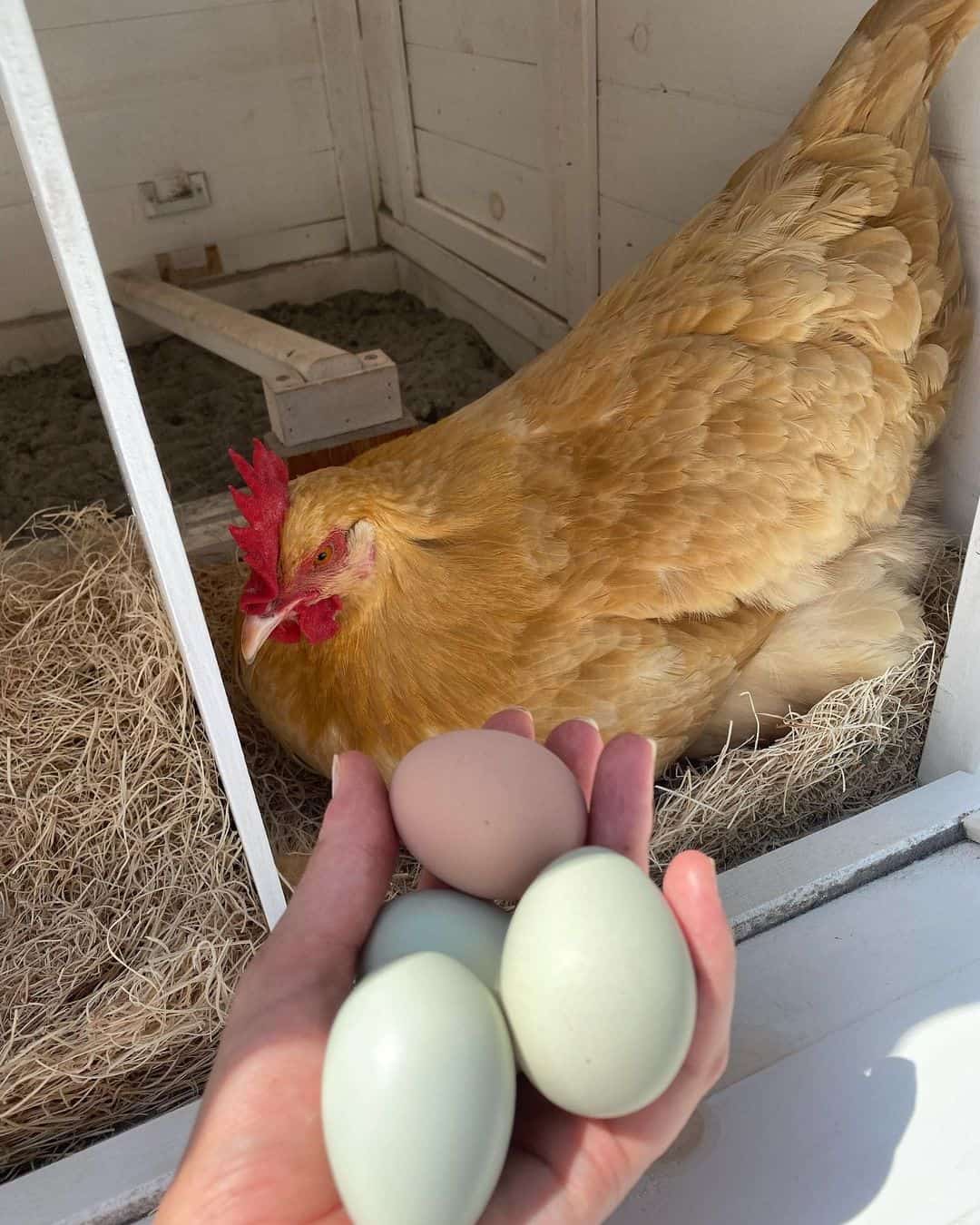
1. What Chicken Breeds Produce White Eggs?
Considering that white eggs are the most popular and sought-after, there are numerous chicken breeds that produce white eggs. Those are: Leghorns, Andalusians, Catalans, Lakenvelders, Hamburgs, Minorcas, and Anconas.
There are chicken breeds also that produce cream to light brown eggs: some of those are Light Sussex, Barred Rock, and Mottled Javas.
2. What Chicken Breeds Produce Brown Eggs?
Brown-shelled eggs are also very popular, and most people that like to have backyard chickens go for breeds that produce brown eggs.
Rhode Island Reds, Plymouth Rock, Buff Orpingtons, French Marans, Australorops, Delawares, and Brahmas are some of the most known and popular brown-egg layers. The color range of the brown-egg layer can range from rosy and copper to dark brown.
Maran, Australorp, Pendesence, and Welsummer produce dark brown eggs.
3. What Chicken Breeds Produce Blue Eggs?
Now we are talking about rare chicken breeds. As you know, blue eggs are very special but are also more expensive than regular white or brown ones.
Why? First, the number of breeds that produce these blue eggs is limited, and secondly, these breeds are not consistent egg layers like Longhorn, for example. The chicken breeds that lay blue eggs include Araucanas, Ameraucanas, Legbars, Dongxiang, Lushi, and Easter Eggers.
4. What Chicken Breeds Produce Green Eggs?
Out of all eggshell colors, the green eggs are the rarest and hence the most expensive. Favaucana, Isbar, Ice Cream Bars, and Olive Eggers are the chicken breeds that produce these eggs.
Conclusion
Ultimately, the breed of hen will determine what egg color it will produce.
So, there you have it; the mystery is solved. In this article, we have covered the egg formation process, what affects the color of the eggs, how you can predict it, the possible eggshell colors, and the breeds that lay these eggs.
Do you have a preference when it comes to chicken egg colors? Please share your experience! If you have any comments, do not hesitate to reach out!



